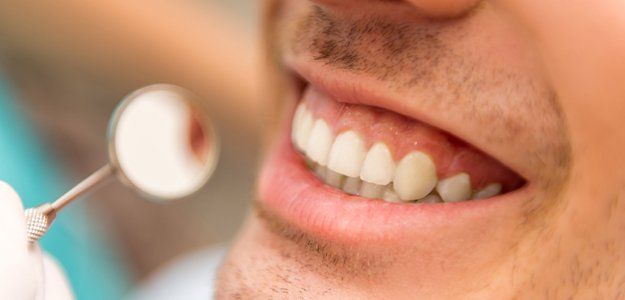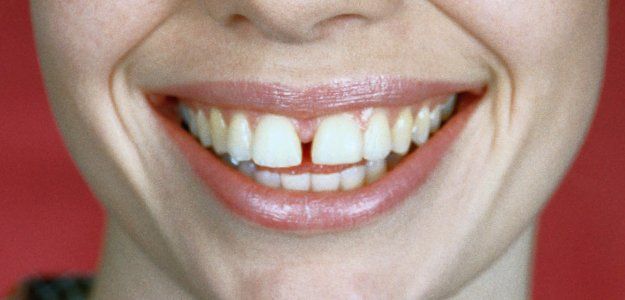Request an Appointment
Healthy Gums, Happy Heart
2015 Herr Ln, Louisville, KY 40222 | 502-425-9285
SERVICES
Periodontal Services
New Patients Always Welcome | Locally Owned
New Patients Always WelcomeLocally Owned
Chao Pinhole Surgical Technique
Dr. Douglas Lowy and Dr. Reid Nelson provide cutting edge periodontal services, specializing in laser treatment, minimally invasive techniques, and compassionate patient care. The Pinhole Surgical Technique PST was invented and patented by John Chao, D.D.S. and has been deemed a breakthrough technique for gum recession and treatment options for receding gums.
- Minimally invasive alternative to gum surgery
- No bleeding, swelling, or pain that is associated with gum surgery
- Immediate cosmetic benefits
- Corrects gum recession without surgery
- No incisions or sutures involved
- Fast recovery and healing time
- Multiple teeth can be treated in a single visit
- Healthier and more attractive smile

LANAP
The Laser Assisted New Attachment Procedure (LANAP) is a laser gum surgery protocol that treats periodontal disease with less pain and less discomfort. The laser used in this gum disease treatment is able to distinguish between healthy tissue and diseased tissue, thereby leaving healthy tissue intact.
Patients experience a high rate of success with this laser gum disease treatment and Drs. Nelson and Lowy rarely need to prescribe pain medication. Most patients are able to manage any discomfort with over-the-counter pain relievers and return to work the next day. We undergo the continual training in new technology. Both our dentists have 60 years of combined experience
.
Gingivectomy
Gingivectomy procedures can be done for cosmetic purposes, such as having a gummy smile, or to treat a periodontal disease that has not been effectively treated with nonsurgical treatment.
The gums will first be completely numbed using a local anesthetic, then small incisions are made to remove the excess gum tissue. The gums are then reformed and reshaped to fit more snugly around each tooth. A putty-like substance is then placed over the gums. It is designed to protect the gums as they heal.

Frenectomy
Frenum refers to the fold of skin which connects the lip / cheek to the gums. The frenum can cause problems such as gingival recession or a gap in the teeth.
During the frenectomy procedure, the fold of skin will be removed or altered to reduce tension or allow for proper orthodontic treatment.

Crown Lengthening
Crown lengthening is necessary when the amount of remaining tooth is inadequate to properly secure a dental crown. The soft tissue and bone surrounding the tooth is modified to allow a crown to adhere more securely.
Free Gingival Graft
A small piece of tissue is removed from the roof of the mouth and is placed, with sutures, over the exposed root surface.
Scaling and Root Planing
Commonly referred to as a deep cleaning or SRP. This procedure involves numbing of the gum tissue and cleaning below the gum line. This is often one of the first steps to treat early periodontal disease, such as gingivitis.
Osseous Surgery
The doctor will begin by using a local anesthetic to minimize pain and discomfort during the procedure. An incision is made in the gum, which is then lifted away from the tooth root to fully access the treatment site. The roots are cleaned of all plaque buildup and the surfaces of both the tooth and supporting bone, which have been eaten away by bacteria are smoothed.
This smoothing is critical for proper healing and maintaining optimal health. The doctor will trim the gums to match the new bone and tooth structure and reattach them with sutures to hold the gums in place while the treated site heals.
Extraction
Extraction is the removal of a tooth.
Socket Graft (Ridge Preservation) / Ridge Augmentation / Bone Graft
After extraction is done, a socket graft may be placed to prevent bone loss. This will preserve the natural bone structure in the mouth and also prepare the area for a dental implant in the future.
After the bone grafting material has been placed, a special membrane will be secured over the area to protect it during the healing process. Healing time is approximately 3-5 months, after which a dental implant can be placed.
Ridge augmentation involves securing the new bone material with small screws, which will later be removed.
Bone grafts are needed to replace deteriorated bone due to gum disease, aging, traumatic injury, or genetic malformations.
Sinus Lift
After tooth loss, the bone in the jaw naturally begins to shrink over time. Without the bone to hold them in place, the sinuses will begin to expand into the empty space.
During the procedure, a small opening is made in the bone to allow the doctor access to the sinus cavity. Grafting material is used to keep the sinus in place. After a period of healing, an implant may be placed at the site.
Call us to learn more.
502-425-9285
Nelson & Lowy PSC uses the latest technologies and brand-name products such as LANAP and PST.
Quick Links
Contact Us
Nelson & Lowy PSC
2015 Herr Ln
Louisville, KY 40222
Tel:
502-425-9285
Louisville, KY 40222
CareCredit
Privacy Policy
| Do Not Share My Information
| Conditions of Use
| Notice and Take Down Policy
| Website Accessibility Policy
© 2024
The content on this website is owned by us and our licensors. Do not copy any content (including images) without our consent.
